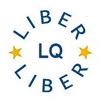What are they doing? And where? Tracking the Traffic as one of the instruments in an evidence-based redesign of a university library
DOI:
https://doi.org/10.18352/lq.10276Keywords:
user studies academic libraries, academic library redesign, Tracking the Traffic, Seating sweepsAbstract
During the last decade we have seen an increased focus on the future use of academic libraries, both in terms of their legitimacy and the use of the physical library space itself.
Prior to a planned, major rebuilding of the Humanities and Social Sciences Library at the University of Oslo (HumSam library), a thorough study was required to establish the current use of the library space, as well as users’ wishes and needs for change.
Several different methods were used to collect this data. One was the method Tracking the Traffic (TTT), developed by Tord Høivik. This is a purely quantitative method, where the users in the library are counted several times during the opening hours. This registration takes place over a set period, for example, at fixed hours every day over a minimum time span of two weeks. The activities of the users are also registered, but without talking to the user, so one can register that one user is reading a book or using a laptop, but not what kind of book or what the laptop is being used for. Other methods used were a user survey, different kinds of interview and photo documentation.
This article aims at demonstrating how the use of the TTT method contributed when the HumSam library conducted studies to ensure an evidence-based renewal of the library. The experiences with this type of data collection are described, and a discussion of the methodology based on our experiences is presented. There are also examples for how this data affected the rebuilding and renewal of the HumSam library. The TTT method needs to be a part of a suite of methods to give an adequate profile of library use. Being a method based on observation, it is necessary to compliment it with other qualitative methods to fill in the picture of library users and to ensure library development soundly based on full evidence (Evidence-based Practice – EBP).
Of course, the library staff had many pre-assumptions about the library use; however, documenting use in this way may lead to more accurate knowledge.
When visiting the redesigned HumSam library today, the responses to the results of the TTT and the other studies mentioned in this article can be clearly seen. The most obvious are the number and variation of seating facilities, the number of group rooms and the reduced height and number of shelves for the physical collection. Scenes and special places for events have also been created, opening hours in exam periods have been increased and the library counters have a more inviting design than before.
Downloads







